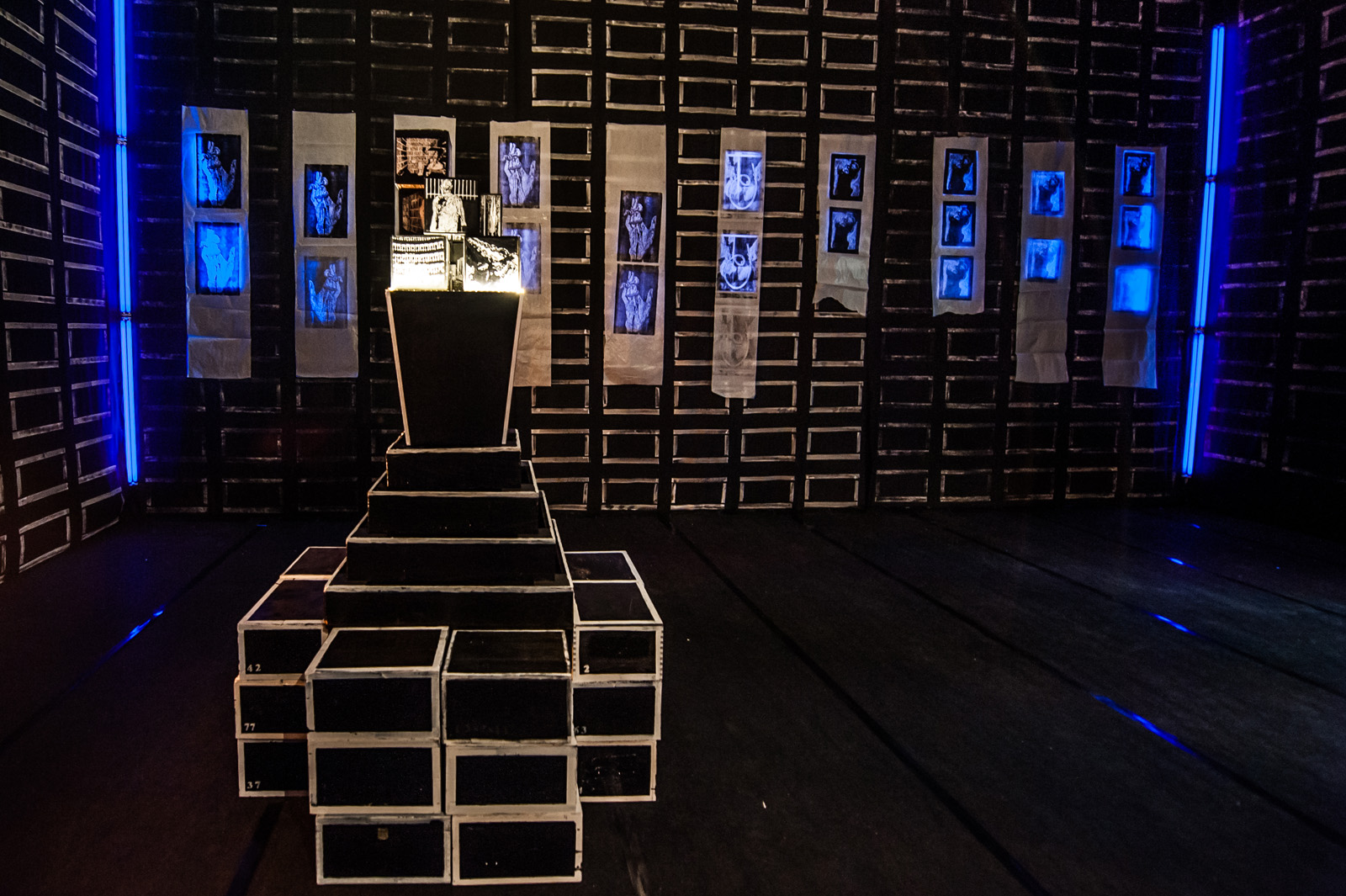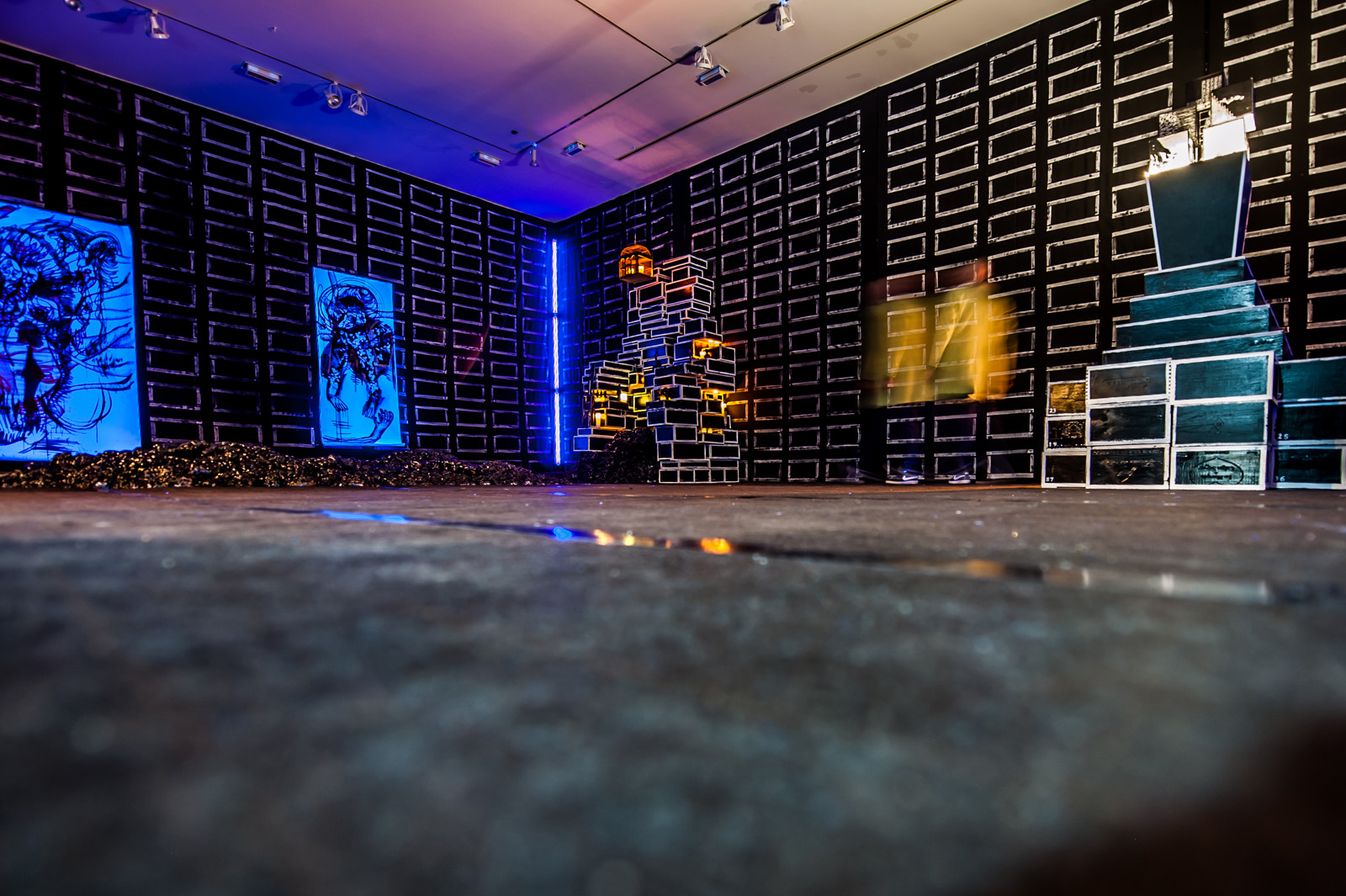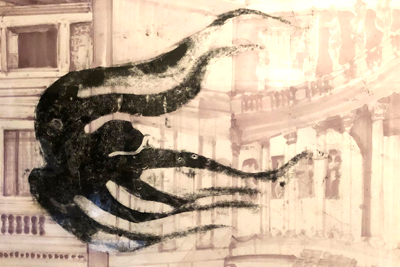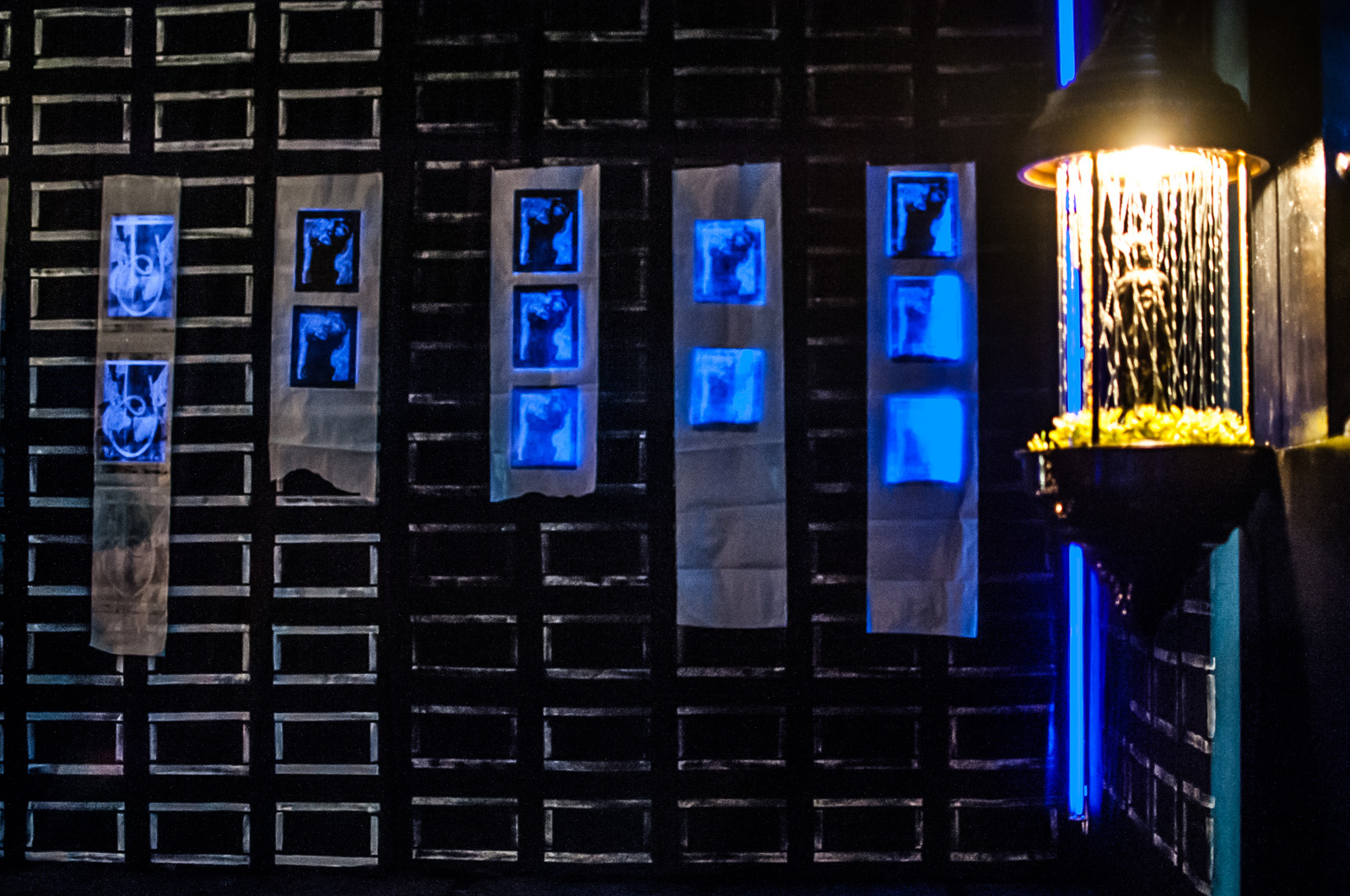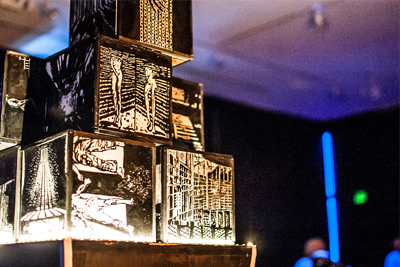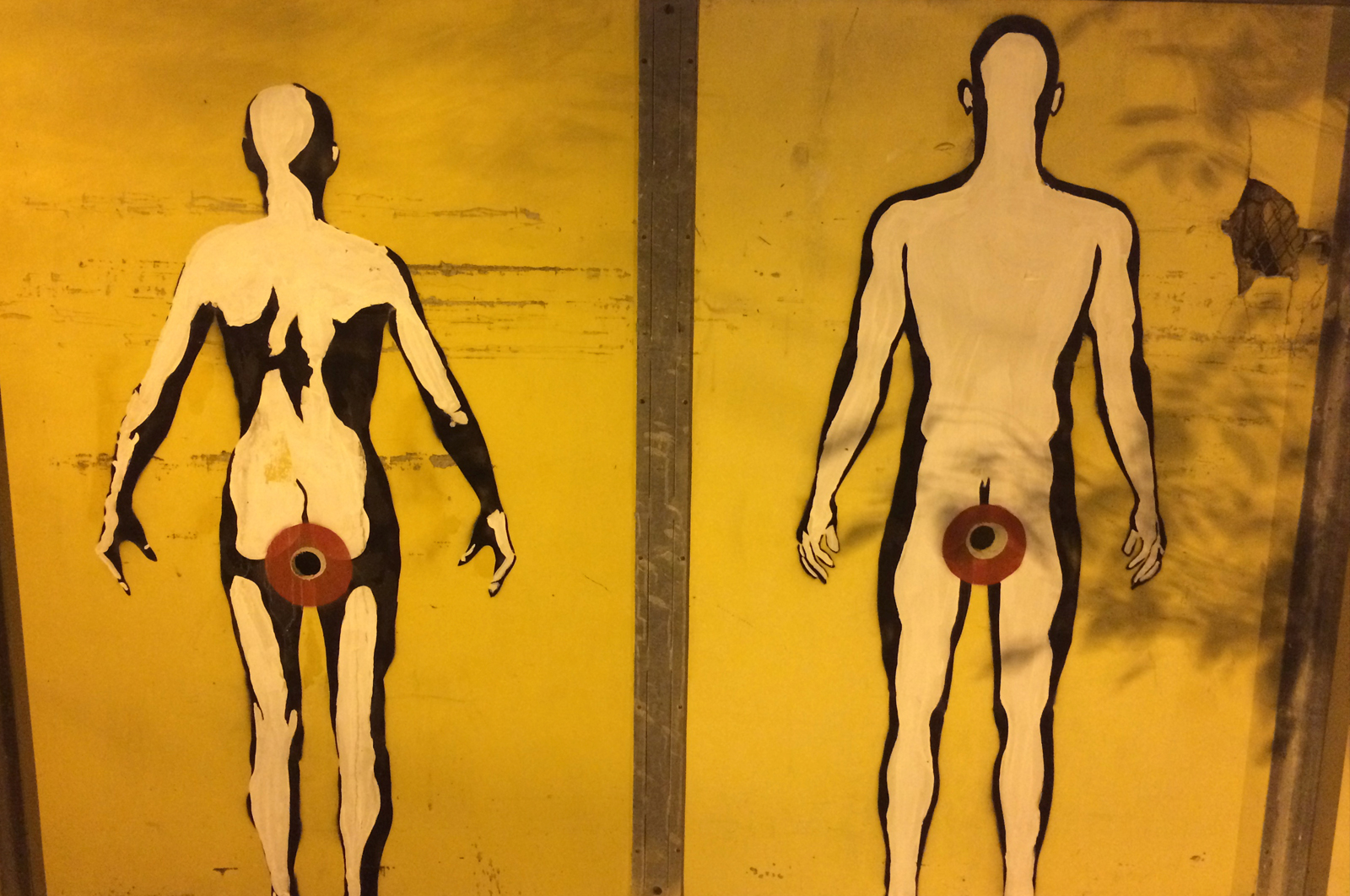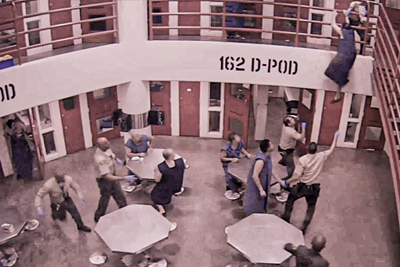
Ghost Prints II
Installation
Bolsky Gallery, Los Angeles
Otis College of Art and Design
MFA Thesis Exhbition
2018
Installation
Bolsky Gallery, Los Angeles
Otis College of Art and Design
MFA Thesis Exhbition
2018
I like to look at art that carries a clearly defined function. I
love mandalas, diagrams, magick sigils, religious art (useful in spiritual
practice), magickal pictures (meant to enable better hunting or a better
harvest), and illustration used for advertising or to illuminate a narrative.
In my own art I want to imply but at the same time obscure function, as I want to create a space of potentiality >>> I want my drawings to carry evidence that something happened >>> I pull prints off of the components of my sculptures to emphasize activity and process >>> I repurpose found objects for my sculptures to give hints of history of use and also liberate the object from said history, thereby opening it up to a new history >>> I manipulate time and revision history by keeping my sculptures unfixed and unfinished, recombining the components differently for each installation, leaving openings for what will happen.
My recent installations completed this year have been described as “an in-between museum of things where you decide whether to stay or keep on living”, “a compelling game with unknown rules”, and "[an environment that] somehow parallels a cosmic drama in a subdued way."
They have also been described as “theatrical.” However, as much as I appreciate what this term might commonly be referring to, as in a dramatic residue or resonance, I think I am looking more at the functionality of that feeling rather than an aftertaste or after-effect. The space of live performance is different than our conception of an object or installation. It is an affected and changeable space. A persistent sneeze at a Mozart concerto will change the concerto, at least for the audience and likely for the performers as well. We conventionally expect certain types of lighting to complement performance, or a certain atmosphere. Similarly, there is a functionality to the environment created for religious services or other functional human activities meant to be set apart from daily life.
I am using my environmental alterations not as signifiers of theatricality but actually to serve a function. I want to create a temporary autonomous zone (temporary space that eludes formal structures of control) that opens itself to possibility and resists a limiting (controlling) definition. At the same time, I’m resisting the format of gallery which is too tied to the idea of marketplace and relegates the function of the work to meaningful interior decoration. Creating a feeling that something could happen, should happen, or is supposed to happen based on the signifiers in the room is my goal. Nothing should happen. The space and the work within it should remain charged with potentiality, like the feeling of standing on an empty stage.
In my own art I want to imply but at the same time obscure function, as I want to create a space of potentiality >>> I want my drawings to carry evidence that something happened >>> I pull prints off of the components of my sculptures to emphasize activity and process >>> I repurpose found objects for my sculptures to give hints of history of use and also liberate the object from said history, thereby opening it up to a new history >>> I manipulate time and revision history by keeping my sculptures unfixed and unfinished, recombining the components differently for each installation, leaving openings for what will happen.
My recent installations completed this year have been described as “an in-between museum of things where you decide whether to stay or keep on living”, “a compelling game with unknown rules”, and "[an environment that] somehow parallels a cosmic drama in a subdued way."
They have also been described as “theatrical.” However, as much as I appreciate what this term might commonly be referring to, as in a dramatic residue or resonance, I think I am looking more at the functionality of that feeling rather than an aftertaste or after-effect. The space of live performance is different than our conception of an object or installation. It is an affected and changeable space. A persistent sneeze at a Mozart concerto will change the concerto, at least for the audience and likely for the performers as well. We conventionally expect certain types of lighting to complement performance, or a certain atmosphere. Similarly, there is a functionality to the environment created for religious services or other functional human activities meant to be set apart from daily life.
I am using my environmental alterations not as signifiers of theatricality but actually to serve a function. I want to create a temporary autonomous zone (temporary space that eludes formal structures of control) that opens itself to possibility and resists a limiting (controlling) definition. At the same time, I’m resisting the format of gallery which is too tied to the idea of marketplace and relegates the function of the work to meaningful interior decoration. Creating a feeling that something could happen, should happen, or is supposed to happen based on the signifiers in the room is my goal. Nothing should happen. The space and the work within it should remain charged with potentiality, like the feeling of standing on an empty stage.










